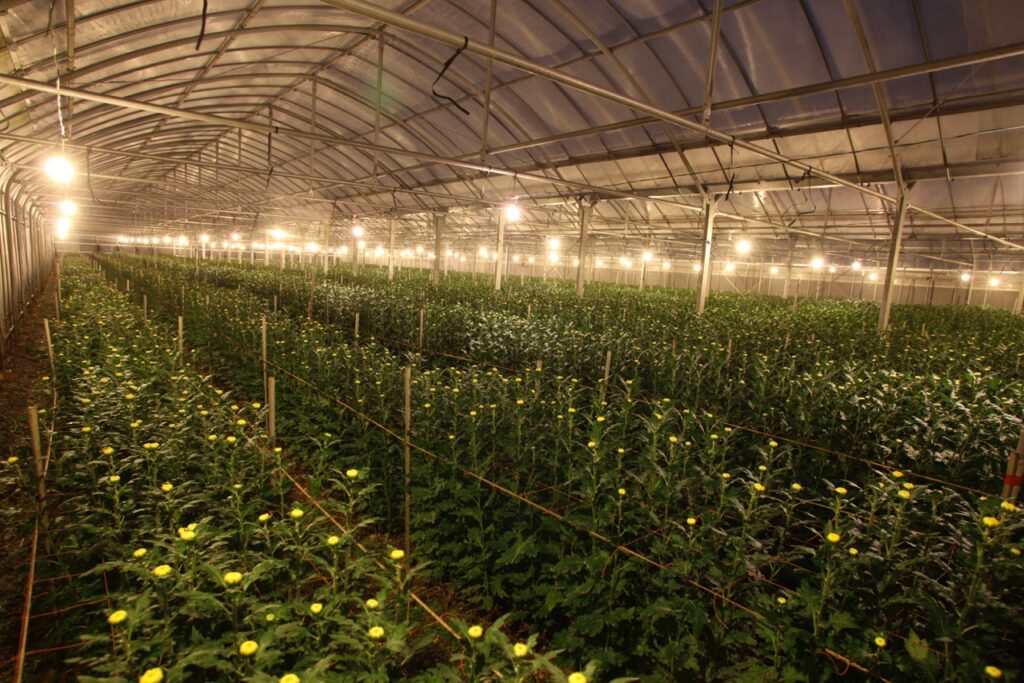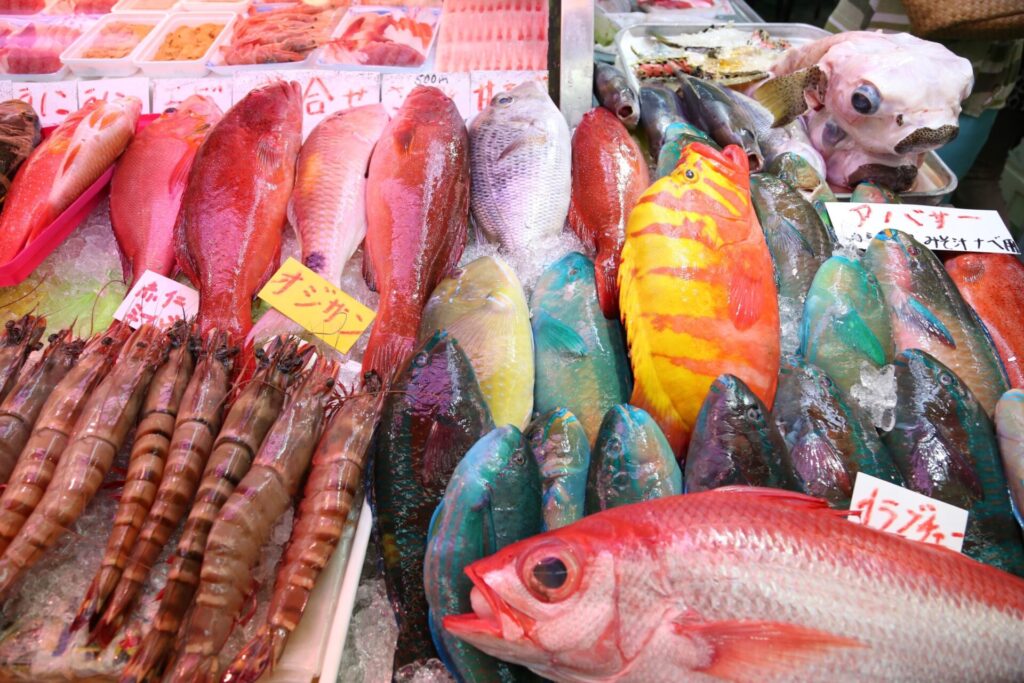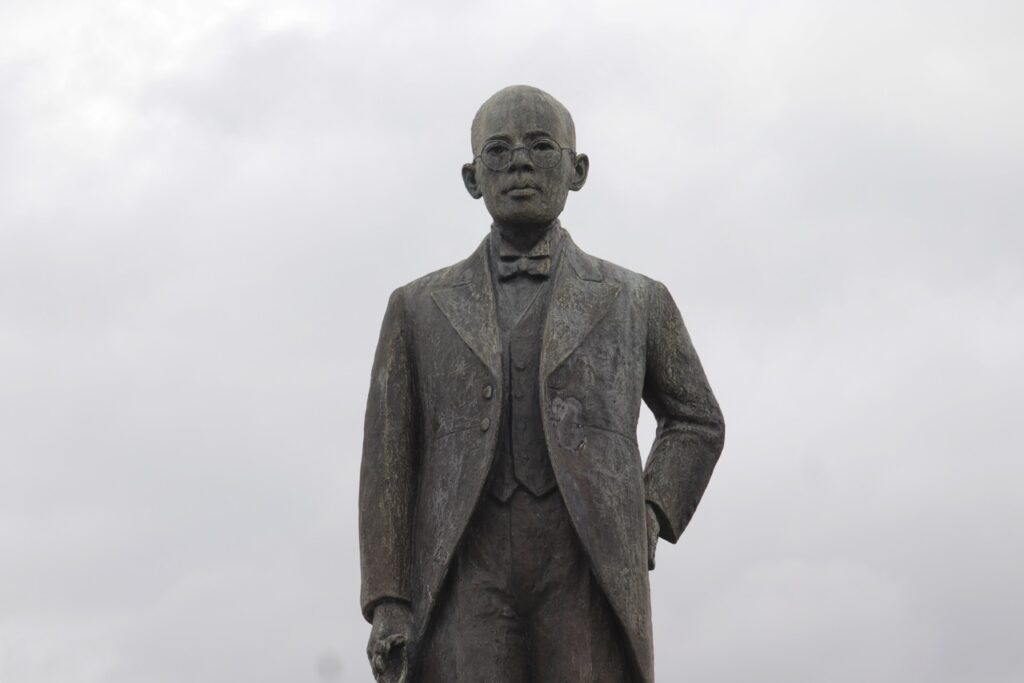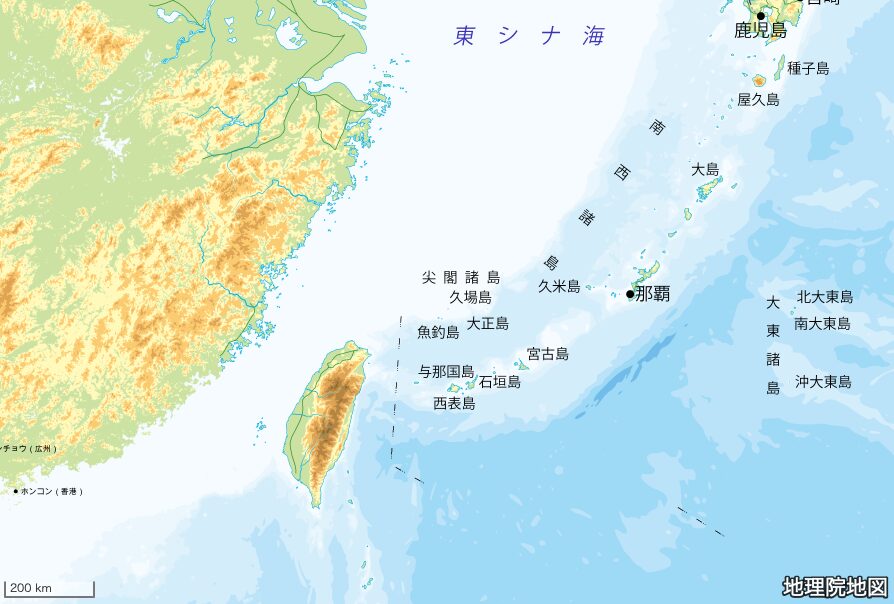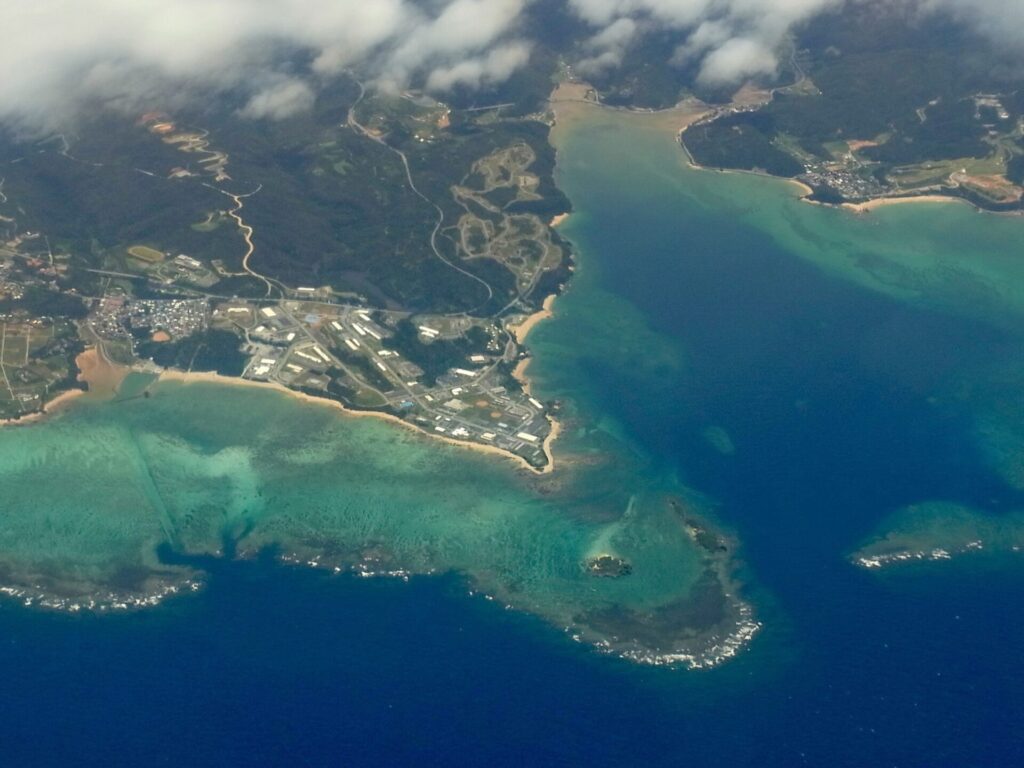Yonaguni Horse
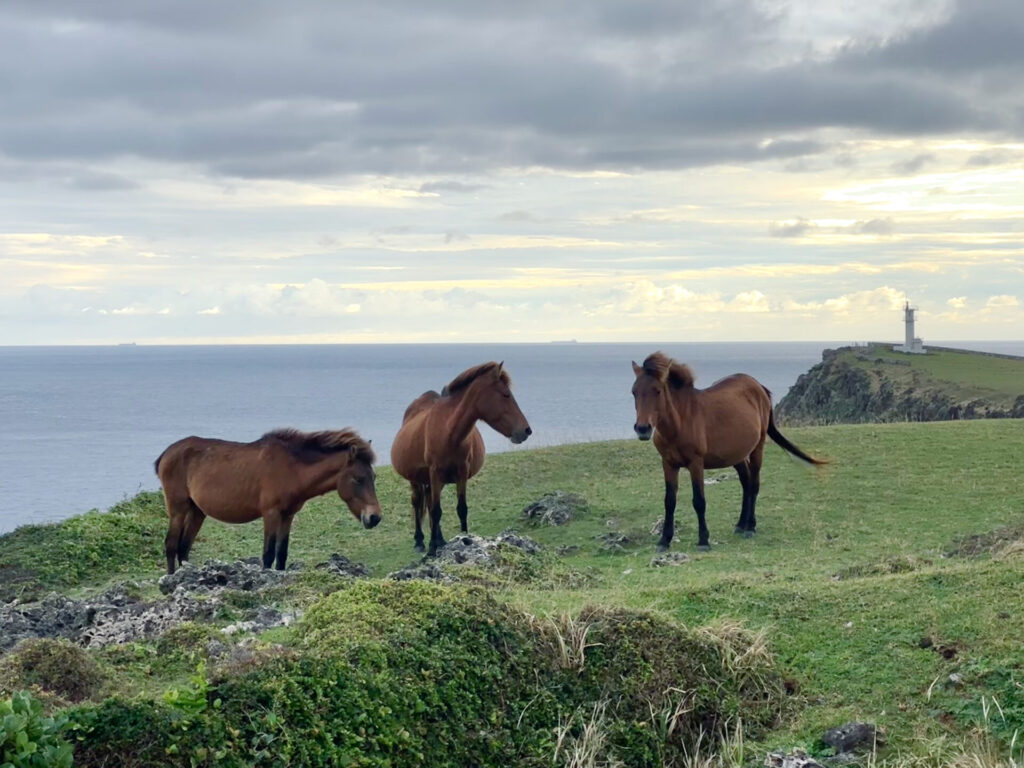
At a meadow on top of a sheer cliff, the Yonaguni horses are grazing on the grass. The ocean spreads out from the foot of the cliff to which the waves surf and break repeatedly. The sky extends out boundlessly, continuously changing its color. On sunny days, the island of Taiwan can be seen beyond the horizon.
On the north and east of the island lay the naturally growing pastures, where the horses live in a near-perfect wilderness. Days dawn, lights shine, clouds drift, dusk gathers, and the moon rises on this meadow. And the flowers bloom, rain rains, typhoons strike.
The horses feed on wild plants and endure the weather under the leaves of screw pine. Every year, a few are born and a few reach their death. Their carcass would soon become white bones and eventually dissolve into the soil.
The wind blows on this pasture, always.
“This must be the other world.”
That was what came to my mind when I first arrived at Yonaguni Island. Seeing the deep and blue ocean, the green grassland, the white lighthouse, and the horses living on this island, I felt a strange feeling filling my heart, as if I stepped into a different dimension. This island is where people live, but at the same time, the Yonaguni horses strolling in this landscape made this land something out of the ordinary.
Nothing precise is confirmed on when the horses arrived on Yonaguni Island. It is said that they were brought here from Mongolia or the south about a few hundred years ago, at a time when such a journey was challenging even for us humans.
Ever since, the horses have vigorously prospered on this far-end island1. Some helped the islanders’ lives by carrying them or their load on the back, while others remained out of harnesses, free to graze on the grass, form a herd, breed, adapt themselves to the severe environment and build their own ecosystem as the “Yonaguni horses”.
You rarely see a place where you can visit wild horses within a ten-minute car ride from your house. After immigrating to this island, I learned various things by observing the horses’ lives every day; how a herd moves, how horses communicate with each other, etc.
I also learned that each horse has his/her personality and role. The chief stallion stoutly and admirably leads his herd. However, the older and wiser mares take the lead in their daily lives. Some horses isolate themselves from the herd, living alone. Some live with the herd but sometimes wander out somewhere, and come back before anyone knows. As such, a herd of horses is ever-changing.
I find it interesting how those who survive the wilderness and those chosen and kept by men seem to be different from each other. Usually, men would like a horse that is obedient and willing to follow instructions, fast-running, beautiful…etc.
But those who live in the wild do not always fit such traits. Some may be rough, or excessively sensible and delicate. Some mares may be plain-looking to humans, but very attractive to stallions.
Horses here possess unique identities, quite different from those controlled and reproduced by men. We can see that they have their own world.
Living close to humans or living in the wilderness, Yonaguni horses seem to have merged the traits from both environments to survive to this day. Artificiality and nature co-exist within them.
However, this Yonaguni Island is not a utopian Horseland. At droughts, many of the foals and weakened ones lose their lives. They have to withstand the typhoon storms and rainy winters. Wild-living horses are much more short-lived than human-bred horses.
Other than such natural phenomena, men also affect their life span. That can be said for every horse living elsewhere; maybe, it’s just that nature’s share was a bit more significant on this island compared to other places. At least, up until now.
The island’s remoteness was another factor in building this ecosystem. Men have to take into account the cost and time to transport cargo. The more it costs, the lesser the human influence.
For example, I heard that many horses were commandeered during the War and never came back. Yonaguni horses were able to escape such death because they were physically too far. While men spend all their time fighting against themselves, these horses lived wild and free in this nature. Yonaguni Island provided such an environment.
A creature’s life sometimes changes drastically, from layers and layers of chances and inevitables. Upon a natural disaster, one’s fate can change at every split second.
Yonaguni horses have originally arrived on this island by human hand. Today, however, another form of human influence seems to be glooming over this island on the national border. I sincerely hope that the horses will make it through the current situation.
Editor’s Note:
- Yonaguni Island is the westernmost island of Japan.
Reference: Uma-Go Techou (A Notebook on Horse’s Language), Hashikko ni, Uma to Iru (With the Horses, I Stand on the Margin), Kurayami ni, Uma to Iru (With the Horses, I Stand in the Dark)
All were written by KAWATA San, and published by kadi books.







